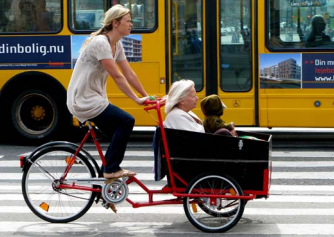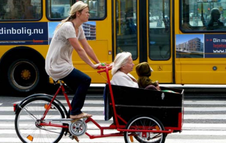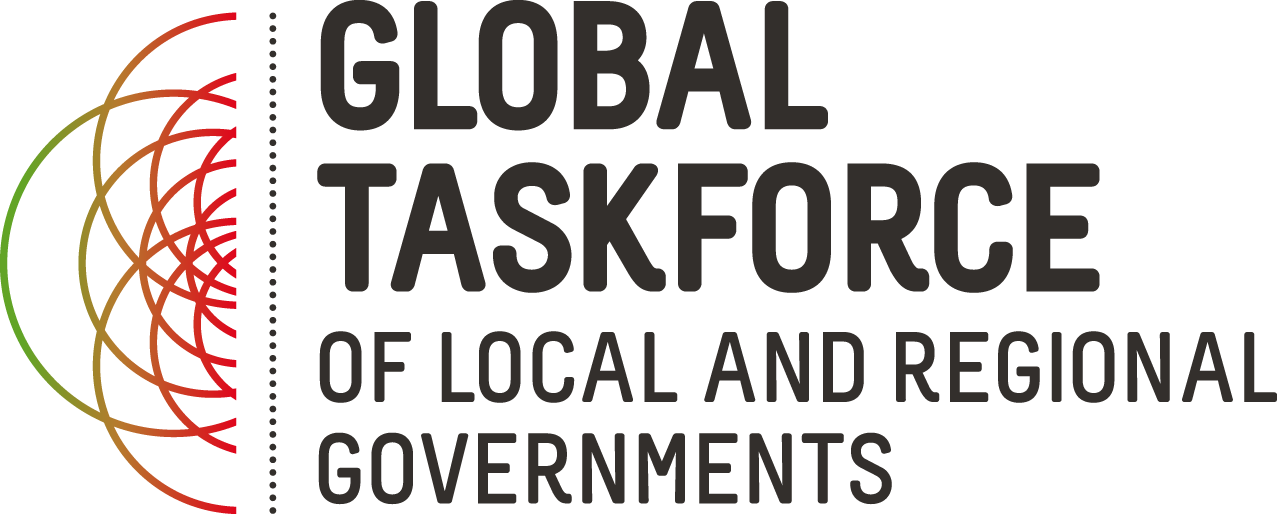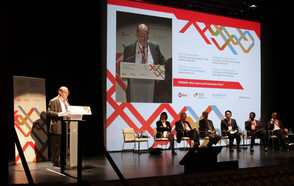
By Bernardo Gutiérres, journalist, writer and researcher
John Lennon wrote that "life is what happens to you while you're busy making other plans". In the 21st Century, at a time when citizens are taking the lead in almost all areas, the right to the city could be what is happening in civil society while experts are agreeing on its definition. The global uprisings of 2011 shook the "right to the city" profoundly, not with theoretical redefinitions, but rather with an icon (camping in public spaces) and a method (collective action which connected the local and global in real time). The occupations of the Arab Spring, 15-M/Spain's Indignants or Occupy Wall Street gave visibility almost performatively to civic practices, forms of organization and ways of building the city. The captivating image of occupied squares led to a wave of academic reviews of the "right to the city". Practice did indeed precede theory.
Henry Lefebvre, who formulated the right to the city in 1967 wrote that the city "is not a closed book, but rather the language of the people", thereby poeticizing social opposition to the modern city. The publication of the book Rebel Cities, by David Harvey, in the heat of Occupy Wall Street, transformed the right to the city into the "right to modify the city collectively", and was not always met with a rebuff from institutions. For Harvey the right to the city involves the regaining of the control and management of the urban surplus by the working class, which is what the city produces. The geographers Selene López and Natalia Lerena deny that the right to the city filters down from academia towards social movements: "on the contrary it crystallizes a two-way process of academic reflections and political action", and it is also a "political slogan". In addition, the influential Global Platform for the Right to the City, which emerged in the city of São Paulo in 2014, broadens the concept's scope towards the commons, which is so much a part of the dilemmas of our era: "The right of all inhabitants, present and future, to use, occupy and produce just, inclusive and sustainable cities, defined as a common good essential to a full and decent life".
The necessary discussion on the concept of the right to the city is very much ongoing. It may, in fact, never end, to the extent that it runs the risk of becoming a concept that is devoid of meaning and used by different stakeholders to fulfil their own agendas. Meanwhile, the right to the city is also everything that is already happening thanks to civil society. The spark which led David Harvey to recycle the right to the city was the fascinating vision of a global political entity which was proclaiming itself to be the 99%: a political entity made from camping, occupation practices, networked squares, cross-cutting subjectivities, free and shared knowledge, collective processes of reclaiming ownership of public space, of giving cities new meaning. From Tahir to the Puerta del Sol square in Madrid, from the Sunflower Movement in Taiwan to Augusta Park in São Paulo, the right to the city became flesh, political action and a civic practice once again. The right to the city is what is happening while the UN's Habitat III is planning the next twenty years for the world.
Following the explosion of 15-M in Spain, the heterodox Indignants movement, the word 'prototype', which until recently was confined to the world of digital culture, started to be used in relation to the social world. A prototype is “an original version or first mould from which a form or other thing is made”. The prototype is a state that precedes the model, and it is characterised by being in a state of constant change, mutation and improvement. In the early years of web programming, within the hacker ecosystem, the expression Perpetual beta was coined to define an unfinished prototype. In a Europe that has been brought to a standstill by austericide, more and more groups of urban planners are embracing the perpetual beta concept, which advocates the “process against the object, the horizontality of work and network thinking, the development of collective civic intelligence and community ownership of projects”. It is no coincidence that the anthropologists Alberto Corsín and Adolfo Estalella called their blog Prototyping and turned it into a genuine inventory of the urban practices, of the prototypes, which brought the neighbourhoods of Spain in crisis back to life.
 Rather than a pre-conceived model, the contemporary city can also be understood as a network of collective practices. Practices which provide a stage for ways of life which already exist in empty estates, occupied squares or social centres. Practices which are based on collaboration, which question competition between individuals as the driving force of life. Practices which precede theories or paradigms of the city. Practices which in many cases are insurgent, political, destituent. Exceeding what is possible, civic practices redefine frameworks, consolidate common action codes and open up holes in corseted institutions. A self-managed theatre which gives a neighbourhood cultural life (Ambros Theatre, Athens), a group which created a network of collaborative urban vegetable gardens in empty urban spaces (Hortelões Urbanos, Sãn Paulo), a community radio station which fights against the gentrification of the a public market (Radio Aguilitas, Mexico City) or a community WIFI network in the La Loma neighbourhood of Medellín are all living metaphors of the concept of “civil practice”. Exceeding what is possible, some practices set local political agendas with global impact. And they foresee desirable and/or intuited futures, which politicians do not dare to call for. The local government of Hong Kong is reducing vehicle traffic in the city centre, directly inspired by the uprisings of #OccupyCentral, which scattered the streets with activity during the student uprisings in 2014. Local governments, recognizing those practices and drawing inspiration from them, may be critical to ensuring that the right to the city becomes the common ground for the public policies of the cities of tomorrow.
Rather than a pre-conceived model, the contemporary city can also be understood as a network of collective practices. Practices which provide a stage for ways of life which already exist in empty estates, occupied squares or social centres. Practices which are based on collaboration, which question competition between individuals as the driving force of life. Practices which precede theories or paradigms of the city. Practices which in many cases are insurgent, political, destituent. Exceeding what is possible, civic practices redefine frameworks, consolidate common action codes and open up holes in corseted institutions. A self-managed theatre which gives a neighbourhood cultural life (Ambros Theatre, Athens), a group which created a network of collaborative urban vegetable gardens in empty urban spaces (Hortelões Urbanos, Sãn Paulo), a community radio station which fights against the gentrification of the a public market (Radio Aguilitas, Mexico City) or a community WIFI network in the La Loma neighbourhood of Medellín are all living metaphors of the concept of “civil practice”. Exceeding what is possible, some practices set local political agendas with global impact. And they foresee desirable and/or intuited futures, which politicians do not dare to call for. The local government of Hong Kong is reducing vehicle traffic in the city centre, directly inspired by the uprisings of #OccupyCentral, which scattered the streets with activity during the student uprisings in 2014. Local governments, recognizing those practices and drawing inspiration from them, may be critical to ensuring that the right to the city becomes the common ground for the public policies of the cities of tomorrow.
Understanding the city as a network of collective practices, as a set of citizen autonomies, of imperfect prototypes, simultaneously widens the definition of the right to the city and of public policy. And it helps to break the public/private dichotomy, by searching for policies oriented to the commons.  What is certain is that local governments must construct urban public policies that are based on equity, justice, inclusion, sustainability and participation. Furthermore, they must legitimize, recognize and protect the practices of the commons, civic practices which shape and weave together again the elements of the urban fabric that keeps a city alive. But recognizing the practices of the commons is not enough: local governments need to promote their existence, even when this means not controlling the processes governed by citizen autonomy. Moreover, the urban management and technology which control cities must cease to be the exclusive preserve of multinationals.
What is certain is that local governments must construct urban public policies that are based on equity, justice, inclusion, sustainability and participation. Furthermore, they must legitimize, recognize and protect the practices of the commons, civic practices which shape and weave together again the elements of the urban fabric that keeps a city alive. But recognizing the practices of the commons is not enough: local governments need to promote their existence, even when this means not controlling the processes governed by citizen autonomy. Moreover, the urban management and technology which control cities must cease to be the exclusive preserve of multinationals.
The World Summit of Local and Regional Leaders of United Cities and Local Governments (UCLG), which was held last week in Bogotá, may strengthen local governments’ commitment to the right to the city. In the collaborative sessions on Co-creating the city, the right to the city defined itself as participation, diversity, learning, justice, sustainability and neighbourhood life. And representatives and social movements prepared documents together with a narrative horizon and political scalability.
This week, local governments will try to make their agenda/commitment influence the Habitat III conference, which is taking place in Quito. By championing the right to the city, without having planned to do so, local governments are also fighting for the political entity of the 99%. By championing the right to the city, which, as well as being a concept, is a civic practice, local governments are also battling for those on the bottom, for those who inhabit cities with practices aimed at the common good. If the UN disregards the right to the city, it will not only be challenging local governments, but also the 99%, which make life flow in cities while nation States are busy making other plans.
Bernardo Gutiérres is a journalist, writer and researcher. He is a consultant for United Cities and Local Governments (UCLG) and works at the MediaLab-Prado in Madrid, a citizen laboratory oriented to open innovation, hacker ethics and copyleft.














